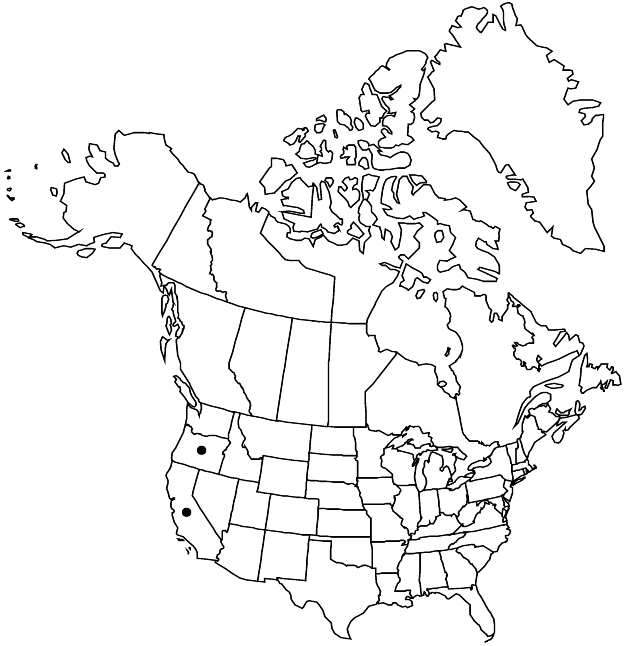familyPolygonaceae
subfamilyPolygonaceae subfam. Polygonoideae
genusPolygonum
sectionPolygonum sect. Duravia
speciesPolygonum polygaloides
subspeciesPolygonum polygaloides subsp. esotericum
Polygonum polygaloides subsp. esotericum
Madroño 31: 251. 1984.
Common names: Modoc County knotweed
Basionym: Polygonum esotericum L. C. Wheeler
Revision as of 17:36, 18 September 2019 by FNA>Volume Importer
Stems 5–12 cm. Inflorescences continuous from bases of branches or stems, narrowly cylindric, 2–10 × 5–7 mm; bracts appressed, elliptic-lanceolate, 4–8 mm, rigid, margins flat, green, if white then scarious portion 0.1–0.2 mm wide; lateral and midveins prominent adaxially. Flowers: perianth 2.1–2.9 mm; tube 29–40% of perianth length; tepals white or pink; perianth tube and base of tepals smooth; stamens 5–8. Achenes dark brown, lanceolate, 2–2.5 mm, reticulately ridged to almost smooth, dull.
Phenology: Flowering Jun–Aug.
Habitat: Vernal pools, seasonally wet places, desert scrub, pinyon and juniper woodlands
Elevation: 1400-1600 m
Discussion
Selected References
None.
Lower Taxa
None.
